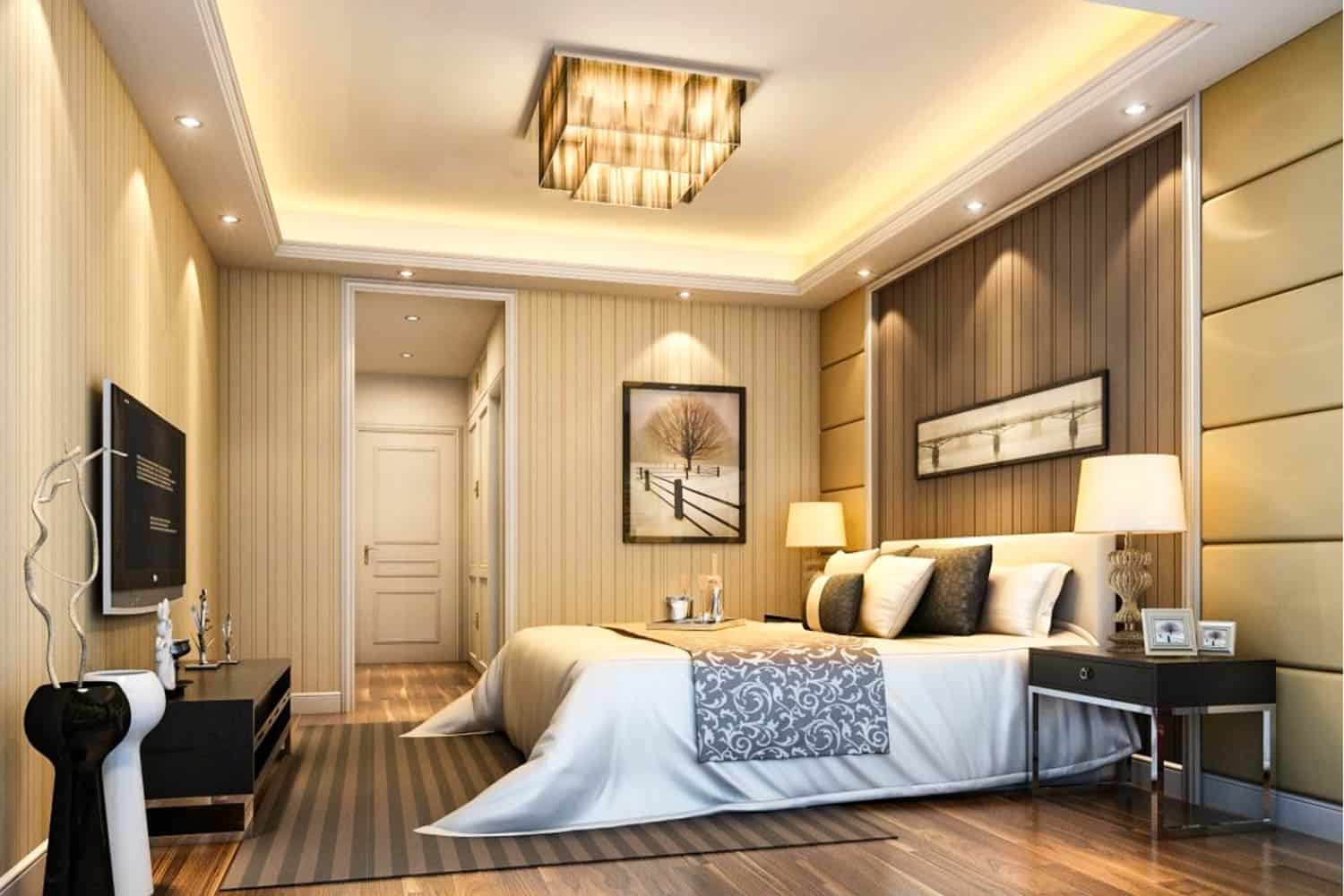Designing a False Ceiling for a Bedroom

A false ceiling, also known as a drop ceiling, is a popular design element in bedrooms, offering a range of benefits like improved aesthetics, better acoustics, and concealed wiring. Designing a false ceiling requires careful consideration of various factors to ensure it complements the room’s overall design and meets your specific needs.
Factors to Consider When Designing a False Ceiling
The design of a false ceiling for a bedroom should align with the room’s size, lighting requirements, and overall design theme. Here’s a breakdown of key factors to consider:
- Room Size: A false ceiling can make a small bedroom feel more spacious by creating a sense of height. However, in larger bedrooms, a false ceiling can help define different zones and create a cozier atmosphere.
- Lighting: The false ceiling provides an excellent opportunity to incorporate various lighting elements, such as recessed lights, spotlights, and decorative fixtures. The type of lighting chosen should complement the overall design theme and provide adequate illumination for different activities in the bedroom.
- Design Theme: The false ceiling should complement the bedroom’s overall design theme. For instance, a modern bedroom might feature a sleek, minimalist false ceiling, while a traditional bedroom could benefit from a more ornate design with decorative moldings.
Integrating the False Ceiling with Existing Architectural Features
Integrating the false ceiling with existing architectural features, such as beams or vaulted ceilings, is crucial for creating a cohesive and aesthetically pleasing design.
- Beams: If your bedroom has exposed beams, the false ceiling can be designed to complement them. Consider using the same material for the false ceiling as the beams or a contrasting material to create a visual interest.
- Vaulted Ceilings: A false ceiling can help lower the height of a vaulted ceiling, creating a more intimate and cozy atmosphere. The false ceiling can be designed to follow the slope of the vaulted ceiling or to create a flat plane that contrasts with the vaulted shape.
Incorporating Lighting Elements into the False Ceiling
The false ceiling offers a versatile platform for incorporating various lighting elements, enhancing both functionality and aesthetics.
- Recessed Lights: Recessed lights are a popular choice for false ceilings, providing even and diffused illumination. They can be strategically placed to highlight specific areas or create a mood.
- Spotlights: Spotlights offer focused illumination, making them ideal for highlighting artwork, furniture, or other architectural features.
- Decorative Fixtures: Decorative fixtures can add a touch of elegance and personality to the bedroom. Consider chandeliers, pendant lights, or track lighting to create a statement piece.
Visual Representation of a Bedroom with a False Ceiling, Interior design bedroom false ceiling
Imagine a modern bedroom with a minimalist false ceiling featuring sleek, white panels. The false ceiling is integrated with exposed wooden beams, creating a contrast between the clean lines of the ceiling and the rustic charm of the beams. Recessed lights are strategically placed to provide even illumination, while a statement pendant light hangs above the bedside table, adding a touch of elegance. The false ceiling helps define the sleeping area while creating a sense of height and spaciousness.
Creative Ideas for Bedroom False Ceilings: Interior Design Bedroom False Ceiling

False ceilings offer a unique opportunity to elevate the aesthetics and functionality of your bedroom. They allow you to add visual interest, create a focal point, and incorporate practical features that enhance the overall ambiance of the space.
Creating a Statement Ceiling with Unique Shapes, Patterns, or Textures
False ceilings can be used to create a statement ceiling that is both visually appealing and unique. You can experiment with different shapes, patterns, and textures to achieve the desired look.
- Geometric Shapes: Consider incorporating geometric shapes such as squares, circles, or triangles into the design of your false ceiling. These shapes can be used to create a modern and minimalist aesthetic or a more intricate and eye-catching pattern.
- Curved Designs: Curved false ceilings can add a touch of elegance and sophistication to a bedroom. They can be used to create a soft and inviting atmosphere or to highlight a specific area of the room, such as the bed.
- Textured Finishes: Textured finishes can add depth and dimension to a false ceiling. Popular options include wood paneling, acoustic tiles, or even fabric coverings.
Using Contrasting Colors or Materials to Create a Focal Point on the Ceiling
Contrasting colors or materials can be used to create a focal point on the ceiling and draw attention to specific areas of the room.
- Bold Colors: A bold color on the false ceiling can create a dramatic effect and instantly transform the look of the bedroom. Consider using a contrasting color that complements the walls or other furniture pieces.
- Metallic Finishes: Metallic finishes, such as gold or silver, can add a touch of glamour and sophistication to the bedroom. They can be used to create a statement ceiling or to highlight specific features, such as a chandelier.
- Wood Paneling: Wood paneling can add warmth and natural beauty to a bedroom. Consider using a contrasting wood species or stain to create a focal point on the ceiling.
Integrating Hidden Storage Solutions within the False Ceiling
False ceilings provide an excellent opportunity to incorporate hidden storage solutions, maximizing space and keeping clutter at bay.
- Concealed Compartments: You can create concealed compartments within the false ceiling to store items like extra blankets, pillows, or seasonal decorations. These compartments can be accessed through hidden panels or doors.
- Lighting Controls: The space within the false ceiling can be used to house lighting controls, such as dimmers or switches. This keeps wiring concealed and allows for easy access to adjust lighting levels.
- Sound System: For music enthusiasts, the false ceiling can be used to integrate a sound system, hiding speakers and wiring for a clean and aesthetically pleasing look.
